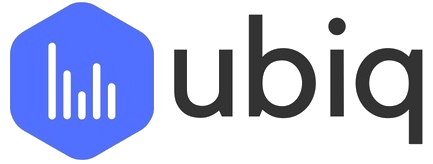Data visualization software makes it easy to visualize data in charts, graphs, and dashboards. They also enable users to share visualizations with others and collaboratively make better, informed decisions. Visualizations allow you to visually communicate lots of information in simple visuals, that are easy to grasp. Here are the 5 best data visualization tools that you can use to analyze, explore, visualize and report data for your business.
Pick The Best Data Visualization Software For You In 2021
Here are the top 5 data visualization tools that you can use for your business.
1. Ubiq

Ubiq is a powerful data visualization tool that allows you to easily visualize data using an intuitive drag & drop interface. You can connect to your data source with just a couple of clicks and get started in minutes.
Ubiq supports all popular data sources such as MySQL, PostgreSQL, SQL Server, Oracle, Google Analytics and more. It offers more than 35 types of visualizations, including maps.
You can easily export visualizations as PDF, Image, or export underlying data as CSV files. In addition, Ubiq allows you to schedule automated email reports.
It also supports dynamic filters and drill-down reports allowing you analyze your data effortlessly. Ubiq also has a robust user management system, useful for teams.
Ubiq offers a 14-day free trial, with paid plans starting from $29/month.
Bonus Read : Top 5 Business Intelligence Tools
2. Tableau
Tableau is one of the most popular data visualization tools that allows you to easily explore data. It is available as desktop, on-premise and cloud deployments.
Like Ubiq, Tableau also has a drag & drop interface to visualize data. However, it is built around the concept of workbooks and worksheets, as in Microsoft Excel. Users can visualize data and save them as worksheets & workbooks.
While Tableau is great for single user deployments, it can be difficult to share and collaborate workbooks with other users. Also, it lacks dashboard reporting features such as ad hoc reporting, dashboard designer, email reports, and report sharing. Hopefully, the future versions of Tableau will address these problems.
Nevertheless, it is robust and mature product.
Bonus Read : Key Factors in Choosing Right BI Tool
3. Power BI
Power BI is a feature-rich data visualization tool by Microsoft that allows you to visualize data using drag & drop interface, build dashboards & reports, and share them with others.
Since Power BI uses visualizations and dashboards, it is easier to use than Tableau, and also has many dashboarding features such as report sharing, email reports and ad hoc reporting.
It also provides deep integration with Microsoft products like Access, Excel, etc.
However, its licensing is a little confusing and can result in unexpected costs. For example, you need to buy a Power BI Pro license ($9.99/user/month) just to be able to share or receive dashboards from other users. This can increase your monthly expenses as you add/remove more users to your team. It also poses a hurdle to quickly add a new team member to the tool.
Bonus Read : Top 5 Visual SQL Query Builder
4. Looker
Looker is a well-known data visualization and reporting platform that allows you to connect to a wide range of data sources, and visualize them in multiple ways. It is available as on-premise as well as cloud-based deployments.
Looker also features a proprietary modeling language LookML that help you analyze your data using their platform.
However, it is not a self-service tool. You need to first get a demo, followed by consultation where they help you install and configure Looker for your team. This can take a few weeks time.
Also, its pricing is available by quote only. Looker is suitable for large businesses and enterprises who have the time and budget to deploy large-scale BI solutions in their organization.
Bonus Read : Top Principle of Data Visualization Design
5. TIBCO Spotfire
TIBCO Spotfire is another popular data visualization software that allows you to analyze, visualize and explore data. It is available as on-premise as well as cloud-based deployments.
It supports a wide range of data sources and offers sophisticated visualization options. It has been built to handle the most complex business rules and data, for almost every industry.
As a result, it requires some technical expertise to get started with TIBCO Spotfire. You might also be required to undergo their training and software consultation to become proficient.
Nevertheless, it has tons of features such as recommendation engine, predictive analytics, location analytics, and also streaming analytics. It is meant for large businesses and enterprises and can be expensive for SMBs.
Conclusion
There are many data visualization tools available in the market, and many of them offer a free trial. Ensure that you evaluate each data visualization tool based on your requirements and budget. If you are looking for a powerful data visualization that enables you to easily connect to your data, visualize it quickly, and share visualizations with others, you can try Ubiq.
Sreeram Sreenivasan is the Founder of Ubiq. He has helped many Fortune 500 companies in the areas of BI & software development.